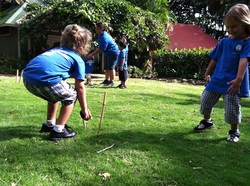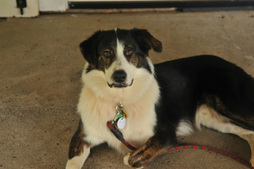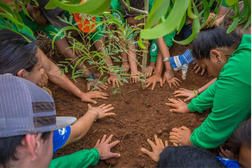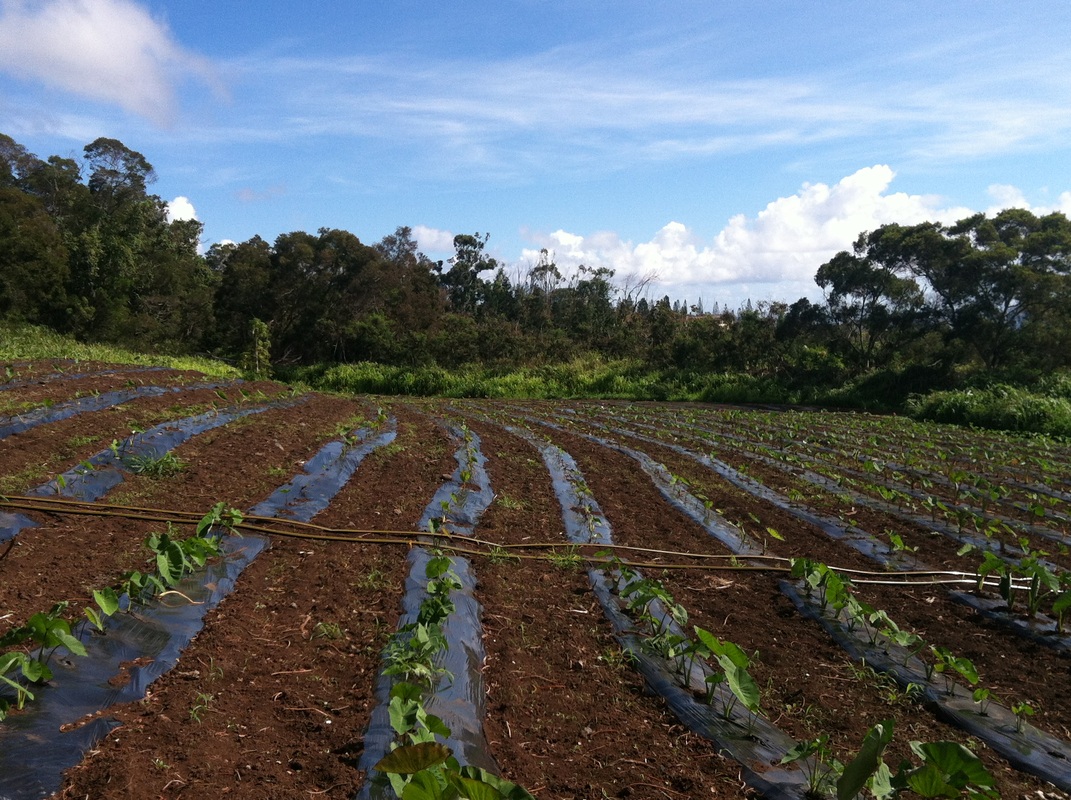Our Programs
at a glance

Kupa'aina Explorations Program
This program allows students to participate in cultural activities outside of the school setting. We assist students in developing cultural values and awareness of the Hawaiian culture. Cultural activities include traditional Hawaiian chants, crafts, native plant uses, wayfinding and navigation, paddling, legends, ku’i kalo and many more fun activities. This program explores the importance of the Ahupua’a system, sustainability, kuleana, and how this system can be modeled today.
Contact us to arrange Huakaʻi (field trip)
|
Living Pono Plantation
The purpose for establishing the Living Pono Plantation is three fold. First, we seek to employ adults with disabilities within the Green Industry at a fare wage while providing them a unique opportunity to learn and gain life skills through a positive and fun alternative work experience. Secondly, by integrating several sustainable agricultural practices we will be providing Hawaii consumers with several alternatives to conventionally grown crops from the mainland as well as healing our ‘aina. Lastly, this system can be an invaluable teaching tool for students to learn about sustainability, a modern working ahupua’a, and to develop curriculum that is relevant to real world applications. Come see our farm! |

Malama Service Dogs
This program was developed to further assist peoples with disabilities in enter the workforce or simply to face the daily challenges of life with a disability. We will breed, raise, and successfully train assistance dogs to provide physical, medical and therapeutic support. Each dog in training learns specific tasks along with basic obedience and social skills. A service dog can open and close doors, retrieve, pull a manual wheelchair, find the phone, do bracing working, turn on and off switches and much more. Hearing dogs respond to different sounds which include knocking, doorbell, timer, alarm clock, smoke alarm, telephone, baby cry and the person’s name.
Visit our Malama Service Dog headquarters
This program was developed to further assist peoples with disabilities in enter the workforce or simply to face the daily challenges of life with a disability. We will breed, raise, and successfully train assistance dogs to provide physical, medical and therapeutic support. Each dog in training learns specific tasks along with basic obedience and social skills. A service dog can open and close doors, retrieve, pull a manual wheelchair, find the phone, do bracing working, turn on and off switches and much more. Hearing dogs respond to different sounds which include knocking, doorbell, timer, alarm clock, smoke alarm, telephone, baby cry and the person’s name.
Visit our Malama Service Dog headquarters
Click here for link to the Hawaii News NOW video clip: http://www.kitv.com/news/thismorning/Help-bring-awareness-to-Brain-Injuries-this-month/-/16414272/19457952/-/ygedsn/-/index.html

Nā Kakoʻo Puʻu Kukui (Supporters of Puʻu Kukui Watershed Preserve)
The Pu’u Kukui Watershed Preserve is one of the wettest spots on Earth averaging nearly 400 inches of rain annually and was established to protect west Mauiʻs native rainforest and associated native plants and animals. At over 8,600 acres of contiguous native rainforest, the Pu’u Kukui Watershed Preserve provides many cultural and ecosystem services such as aquifer recharge, soil retention, reef protection, native habitat for endemic flora and fauna, rare species protection and conservation education to the next generation. This Preserve protects natural resources for future generations by conducting ungulate control, weed management, rare species protection, and community outreach. In addition to upper elevation management efforts the preserve established 3,000 acres of ma kai conservation areas. Together, active management from the summit of Puʻu kukui to the corals in Honolua Bay offer a unique landscape.
The Pu’u Kukui Watershed Preserve is one of the wettest spots on Earth averaging nearly 400 inches of rain annually and was established to protect west Mauiʻs native rainforest and associated native plants and animals. At over 8,600 acres of contiguous native rainforest, the Pu’u Kukui Watershed Preserve provides many cultural and ecosystem services such as aquifer recharge, soil retention, reef protection, native habitat for endemic flora and fauna, rare species protection and conservation education to the next generation. This Preserve protects natural resources for future generations by conducting ungulate control, weed management, rare species protection, and community outreach. In addition to upper elevation management efforts the preserve established 3,000 acres of ma kai conservation areas. Together, active management from the summit of Puʻu kukui to the corals in Honolua Bay offer a unique landscape.
